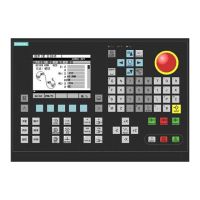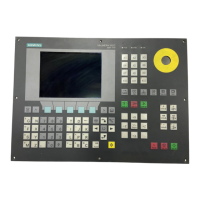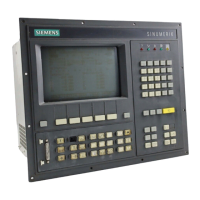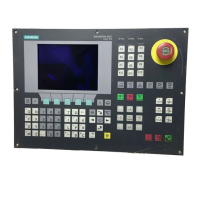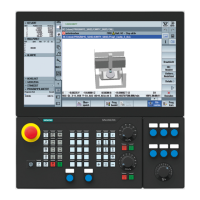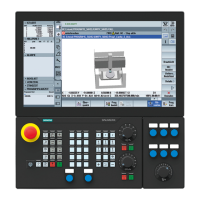Tool offsets
7.7 Free assignment of D numbers, cutting edge numbers
Job planning
432 Programming Manual, 07/2010, 6FC5398-2BP40-0BA0
Significance
d
D number of the tool edge
t
T number of the tool
ce
Cutting edge number (CE number) of the tool
state
Indicates whether the command could be executed (TRUE or FALSE).
Example for renaming a D number
Programming Comments
$TC_DP2[1.2]=120 ;
$TC_DP3[1,2] = 5.5 ;
$TC_DPCE[1,2] = 3 ; Cutting edge number CE
... ;
N10 def int DNoOld, DNoNew = 17 ;
N20 DNoOld = GETDNO(1,3) ;
N30 SETDNO(1,3,DNoNew) ;
The new D value 17 is then assigned to cutting edge CE=3. Now the data for the cutting
edge are addressed via D number 17; both via the system variables and in the programming
with the NC address.
7.7.4 Free assignment of D numbers: Determine T number to the specified D number
(GETACTTD)
Function
You determine the T number associated with an absolute D number using the GETACTTD
command. There is not check for uniqueness. If several D numbers within a TO unit are the
same, the T number of the first tool found in the search is returned. This command is not
suitable for use with "flat" D numbers, because the value "1" is always returned in this case
(no T numbers in database).
Syntax
status=GETACTTD(Tnr,Dnr)
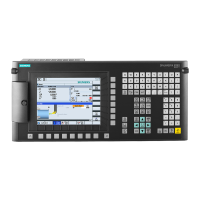
